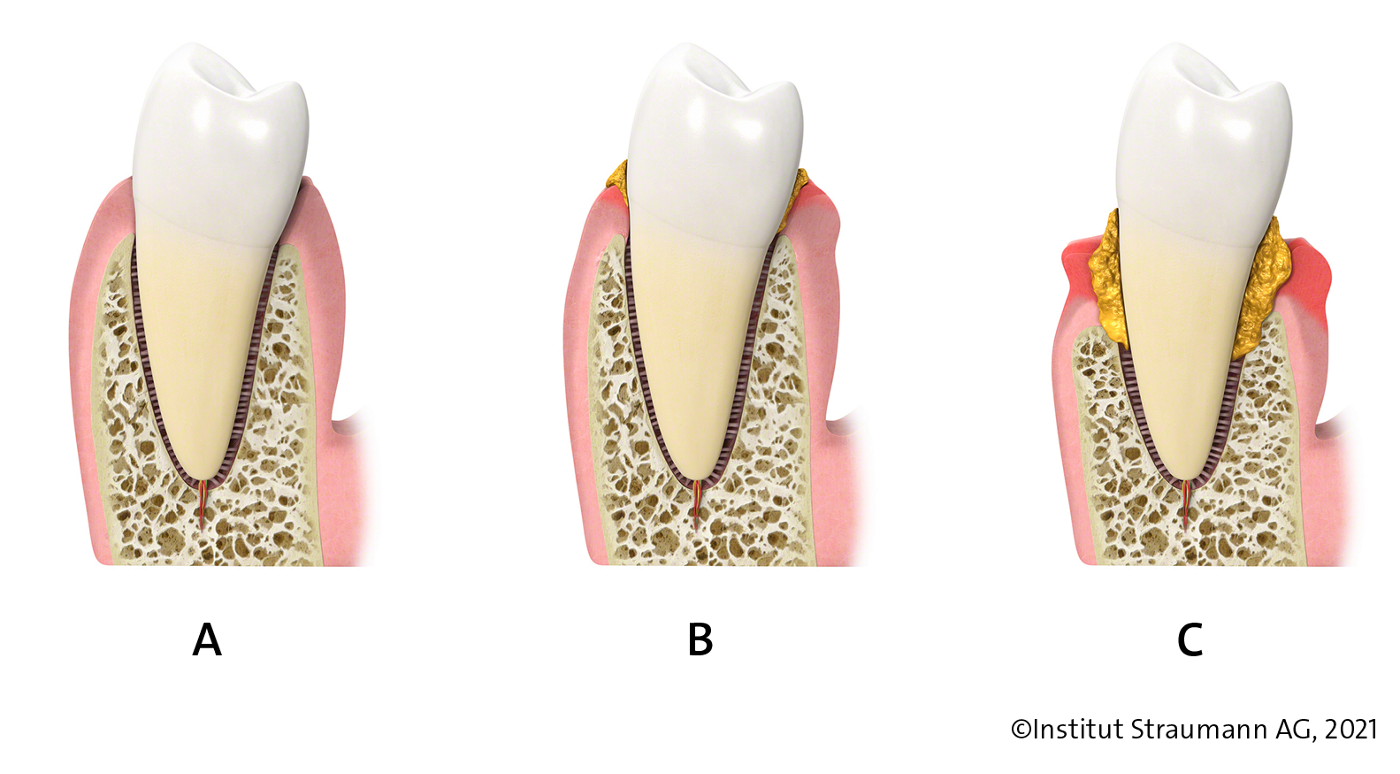What do you know about gum disease?
Gum disease is the most common cause of tooth loss among adults and affects the majority of the adult population to some degree.*
ARE YOU AT RISK?
- Do your gums bleed when you brush or floss your teeth?
- Do you have bad breath?
- Are your gums red or swollen?
- Do you smoke?
If you answered YES to any of these questions, you might be at risk of having gum disease. Left untreated, not only could this condition lead to tooth loss, but it could also put you at risk of cardiovascular diseases, such as heart attacks and strokes.
Gum disease: the hidden threat to your health
Why? Because even if your teeth look good, seem to be healthy and are free of pain, the issue might lie under your gums, in the teeth supporting tissues such as the jaw bone and the periodontal ligament (the ligament between the teeth and the jaw bone).

Different stages of gum disease
A: Healthy tooth with intact periodontium.
B: In the first stage, the gum becomes inflamed. This is called gingivitis and is reversible.
C: Advanced stage of inflammation with destroyed periodontium.
If the inflammation spreads under the gums, it starts to destroy the teeth supporting structures. Such damages which may cause teeth to become loose and fall out are irreversible unless medical attention is sought.
Gum disease is a silent disease. Usually, no serious symptoms (pain, discoloration of the gum) are apparent before the disease has reached an advanced stage or the tooth is lost.
Consult your dentist for more information
Seek advice from your dentist early on how to treat gum disease.


